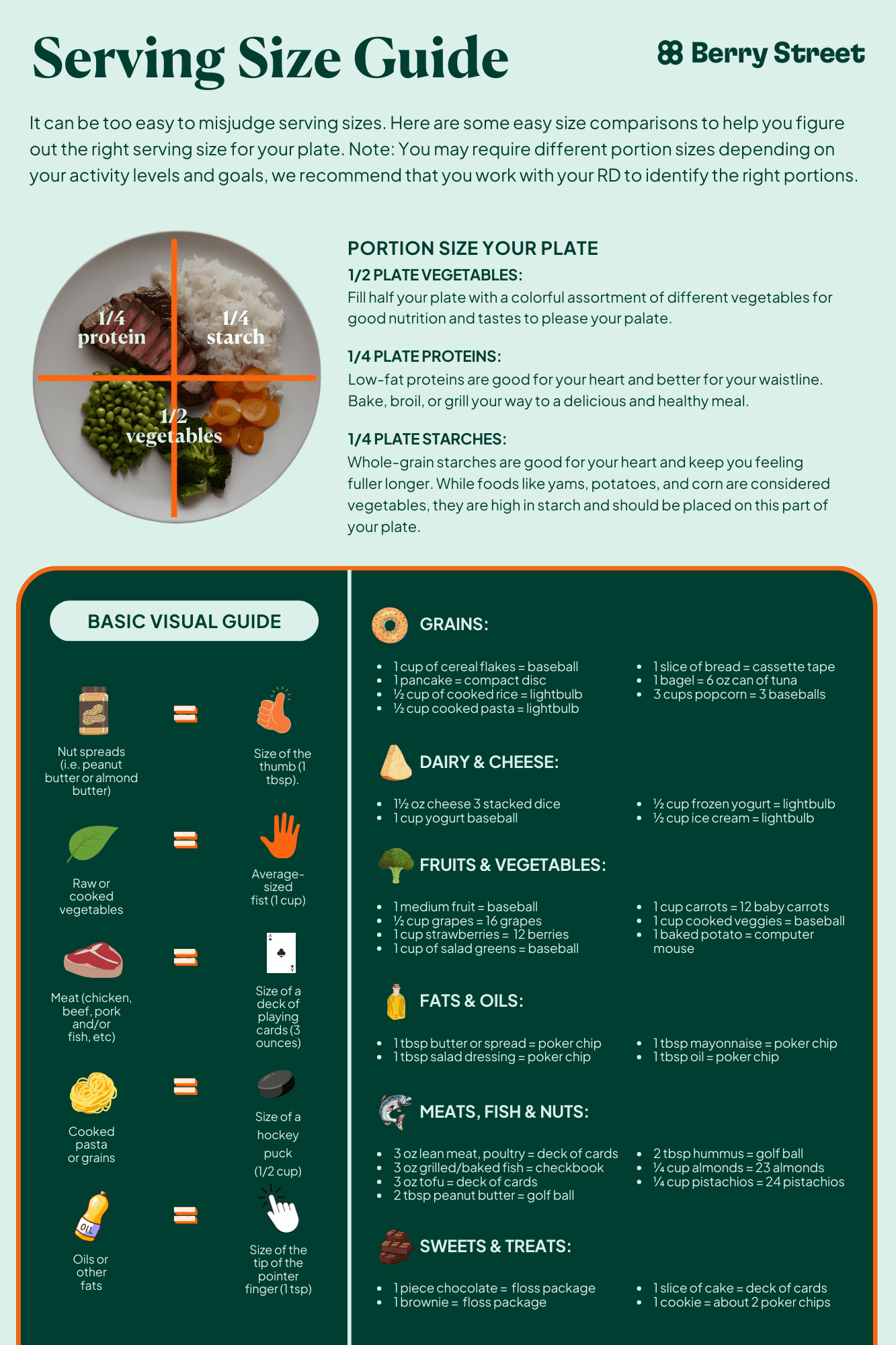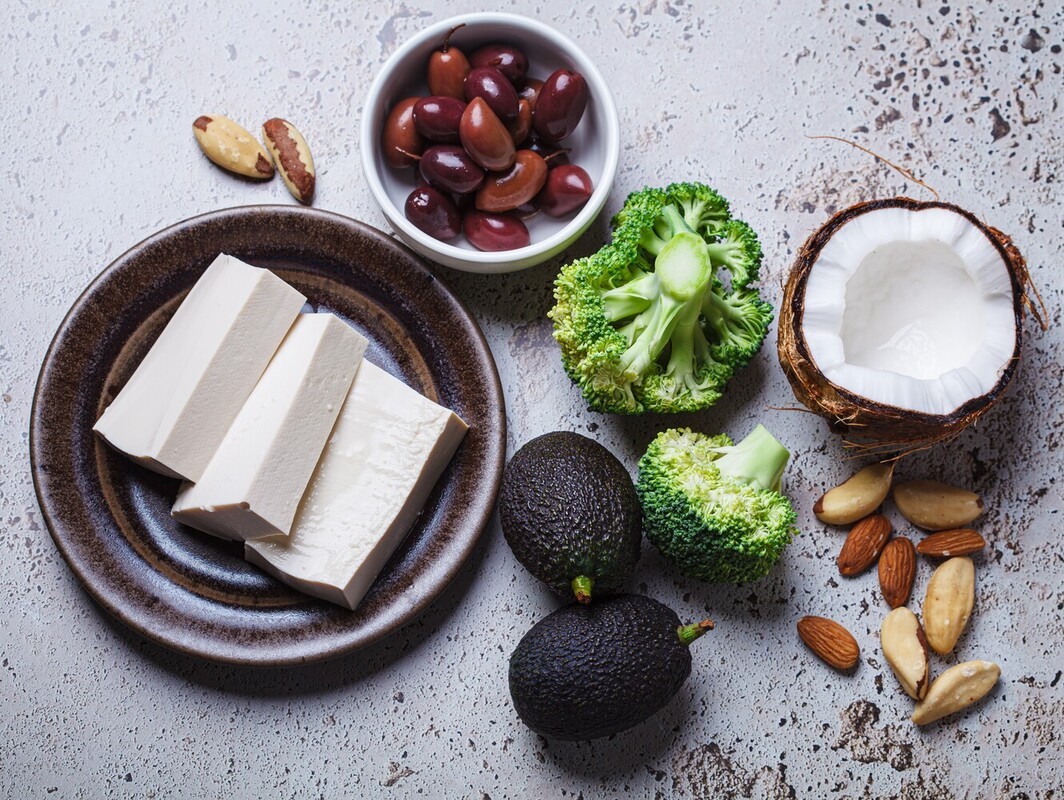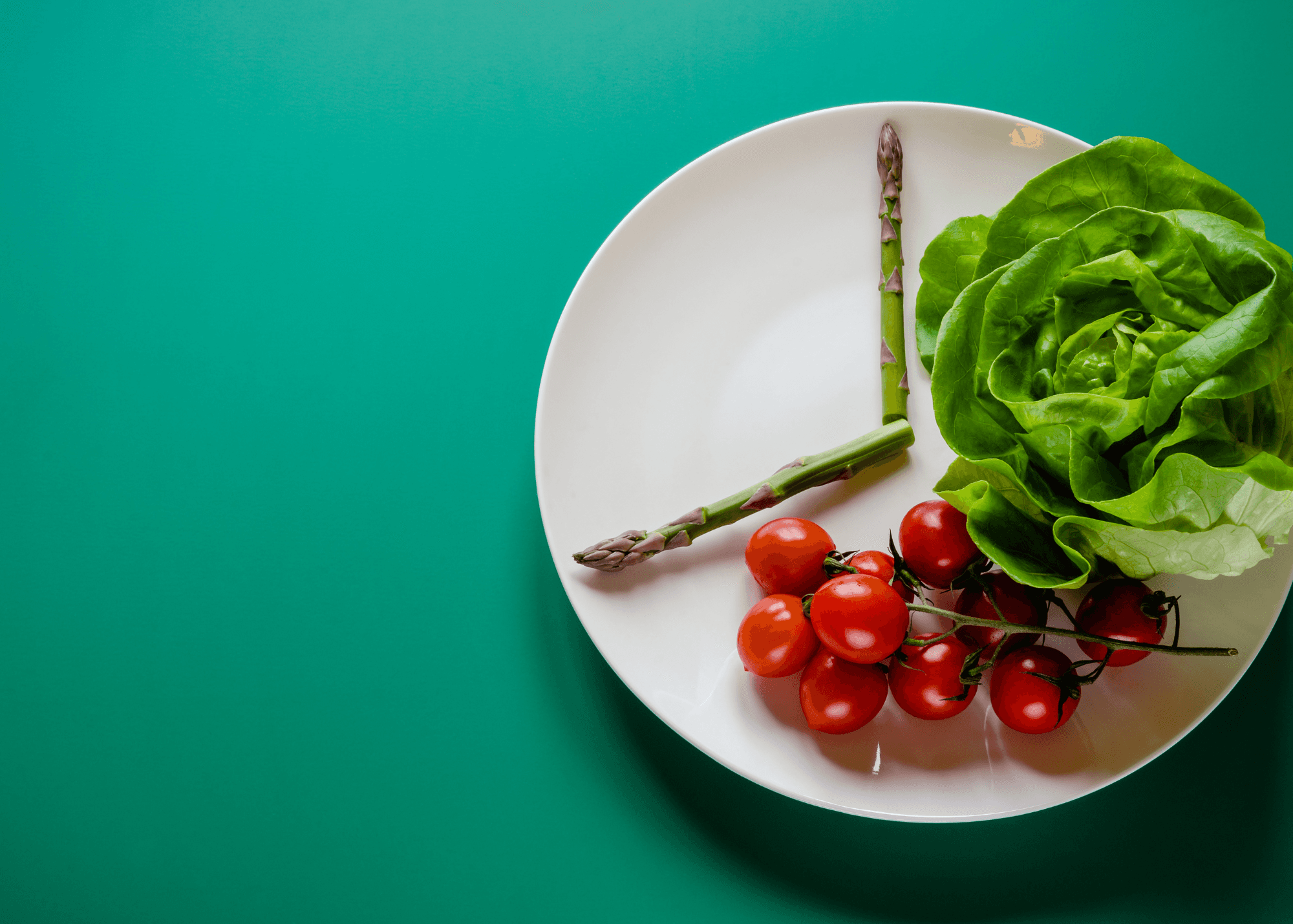Eating healthy can often feel like a mystery, especially when it comes to portion sizes. Your favorite restaurant may have a burrito that is larger than life, whereas you may cook half as much when you are at home and still feel satisfied. This can create confusion as to how much you are really supposed to be eating.
Further, it can be difficult to understand the impact of portion sizes on our health goals and any existing health conditions.
In this article, we’ll break down what portion sizes are, how to measure them, and how you can use this skill set to impact your overall nutrition.

What are portion sizes?
Portion sizes often refer to a relative portion or a common amount of food eaten in a serving. It’s helpful to understand portion sizes when you are consuming foods that do not have a nutrition label, like fruits, vegetables, and servings of protein. It is also beneficial if you are eating at a restaurant that does not provide information on the serving size or nutrients your meal contains.
Portion sizes are a different form of measurement than a serving size. A serving size indicates the nutrients found in a particular serving of a food. For example, a granola bar may be one serving of food with a detailed number of calories, carbohydrates, proteins, and fats. Outside of processed foods, you may not have access to a specific nutrition label and may need to rely on portion sizing for more accuracy. Portion sizes are a useful tool and act as an adaptable starting point when understanding your nutrition.
If you are eating salmon at a restaurant, you can estimate how many ounces you are eating by comparing it to a deck of cards. If your portion size is similar to a deck of cards, you may be consuming around 3 ounces of salmon. This provides a quick gauge to analyze your food intake.
By using everyday items, or even parts of your body, you can get a grasp on the relative amount of food you are eating.
Why are portion sizes important?
Every food has a different balance of nutrients, meaning that different foods contain varying amounts of calories, carbohydrates, fats, proteins, vitamins, and minerals. Each of these nutrients helps our bodies function correctly.
However, every single person can benefit from different types of foods, and subsequent nutrients, in their diet. For example, a professional athlete may require more calories than someone with a sedentary lifestyle. A pregnant woman may require more vitamins and minerals than a non-pregnant adult. A Berry Street Registered Dietitian can help you understand nutrients in more depth, and especially how they work for your body.
Portion sizes bridge the gap between gaining insight into your nutrition and intently tracking your food intake, since you can still understand the relative amounts of nutrients you are consuming.
According to Jessica M. Kelly, RDN, LDN of Nutrition that Heals, LLC, using portion sizes, “[T]akes the guesswork out of how much to eat, promoting balanced meals without measuring or counting.” She continues, “Knowing exactly how much you should eat is very personal and individualized, and using portion sizes can give your medical team data to understand your habits."

How do I use this guide?
Our visual guide can help you understand how much you are eating at home and on the go. You can visually assess your food using anything from the tip of your pointer finger to an average sized fist to understand how much you are eating.
At your next meal or snack, take note of your portion size compared to the Berry Street Portion Size Guide. Let this information guide your decisions in future meals and snacks, too.
Don’t forget to take a screenshot or print the Berry Street Portion Size Guide out so you can have it ready to view whenever you need! You can also download it for free as a pdf.

How much should I eat?
Like every area of our health, food portions are highly individual. There is no one-size-fits-all approach to nutrition, especially as every person’s lifestyle, body, and goals require a unique approach. But, this does not mean it is impossible to learn what will work best to support your goals.
A Registered Dietitian Nutritionist from Berry Street can help you gain clarity with your food portions and how they impact your health. Before meeting with your Registered Dietitian, it is helpful to take note of your average food servings and overall health habits. You can then share this information, alongside your health history and a detailed overview of your lifestyle.
By using the Berry Street Food Portion Size Guide before your first nutrition therapy appointment, you will already have insight into your typical nutrition patterns. With this, your Registered Dietitian will collect and analyze the information you provide to create actionable steps that will help you meet your nutritional and health goals.
Conclusion
Nutrition can be overwhelming, especially if you do not understand how much you are eating of different foods and nutrients. With confusion between serving sizes, portion sizes, and other measuring tools, it may feel difficult to find a starting point. Berry Street’s Portion Size Guide can help you take the first step in understanding your daily nutrition intake.
Schedule your first session with an in-network Berry Street Registered Dietitian to dive deeper into your nutrition needs – and discover how portion sizes can support your journey. Whether you’d like to manage your weight, have more energy, improve a health condition, or feel more confident in your choices, understanding food portions is a powerful tool to begin the journey.













